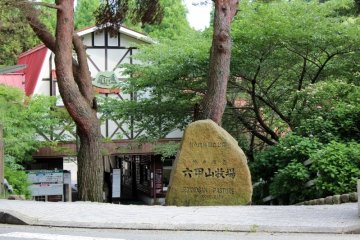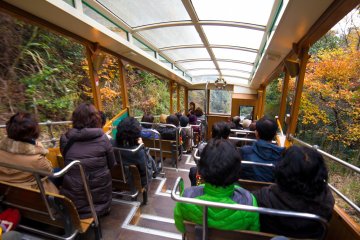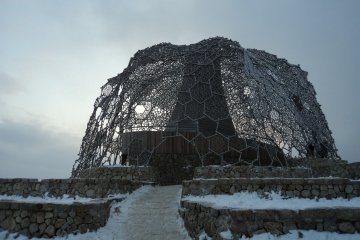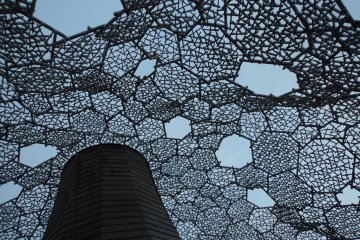Mount Rokkō (六甲山) refers to a group of mountains located in Hyōgo Prefecture, and specifically to the highest peak among them. It can easily been seen from pretty much anywhere in Kobe. It is famous as one of the top 50 mountains in Hyōgo, one of the top 100 in the Kinki area, and even one of the 300 most famous mountains in Japan. In Osaka and Kobe, it is known as an amazing sightseeing spot and hiking area. From the top of the mountain, you can see a panoramic view of Kobe and Osaka. The view is especially beautiful after sunset, when the cities light up. It is incredible how far you can see when the weather is good.
To reach the top of mount Rokkō, I would recommend taking the cable car. Starting from the Hankyu Kobe line's Rokkō Station, the JR line's Rokkomichi Station, or the Hanshin line's Mikage Station, take bus #16 until you reach the cable car terminal. The bus costs 200 yen and the cable car costs 570 yen one way or 1000 yen for a round trip.
It takes about 10 minutes to get to the top, and once you get there you will find many attractions. For instance, you can visit a botanical garden, tour a music box museum, or go skiing. There are also a few shops and restaurants and a wonderful observation deck. A small bus makes circular rounds, so you can visit different attractions easily, including Arima Onsen.
I personally recommend visiting the Rokkō Shidare Observatory. This observatory was designed by Hiroshi Sambuichi, a famous architect inspired by the natural elements, air, wind, and water. The concept of this building is closely linked with nature. Rather than focusing on the landscape, visitors are encouraged to watch the effects that the four seasons have on nature. On this particular project, Sambuichi got his inspiration from water in its many forms. Mount Rokkō is indeed known for its cold temperatures during winter, and the building is a dome made of empty hexagonal frames meant to attract frost during winter. Actually, the building looks like it is covered with frosted leaves.
This observatory is also quite interesting due to its temperature control system during summer. To cool down the observatory, its architect built a large wooden tunnel in its middle and several reservoirs, which, depending on the season, will be full of either water or ice. During winter, the water collected during summer and fall freezes. Small blocks of ice will be harvested from the reservoirs and placed into small airtight compartments in the core of the building. This keeps the observatory cool during summer.
Ultimately, what makes this observatory so interesting is its architecture. It is truly beautiful and it encourages visitors to see nature differently. A quick stop will not disappoint.
Before taking the cable car back down again, make sure to stop at the observation deck located near the restaurants and shops. If you can, try to wait until after sunset; the view then is astonishing, certainly more impressive than during the day.
If you visit Kobe during the end of February, make sure to check the Rokkōsan Ice Festival, which takes place on top of the mountain. Since the temperature isn’t below zero all the time, all the sculptures are placed under a big tent to prevent them from melting too fast. Even so, the festival lasts only about four days. The sculptures are very sleek, because their designers do not put snow on them after completing them. Instead, the designers install colorful lights that shrine through the ice. Admission is generally very cheap, but you can also buy a combined ticket at the cable car entrance and save some money. This can be a fun activity to do with young children. It is also very famous among young couples.













